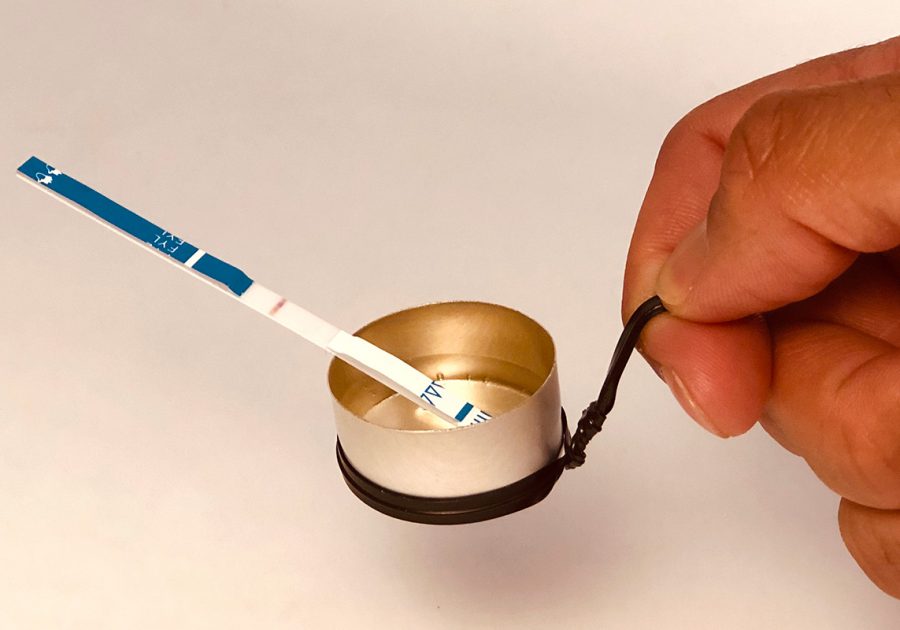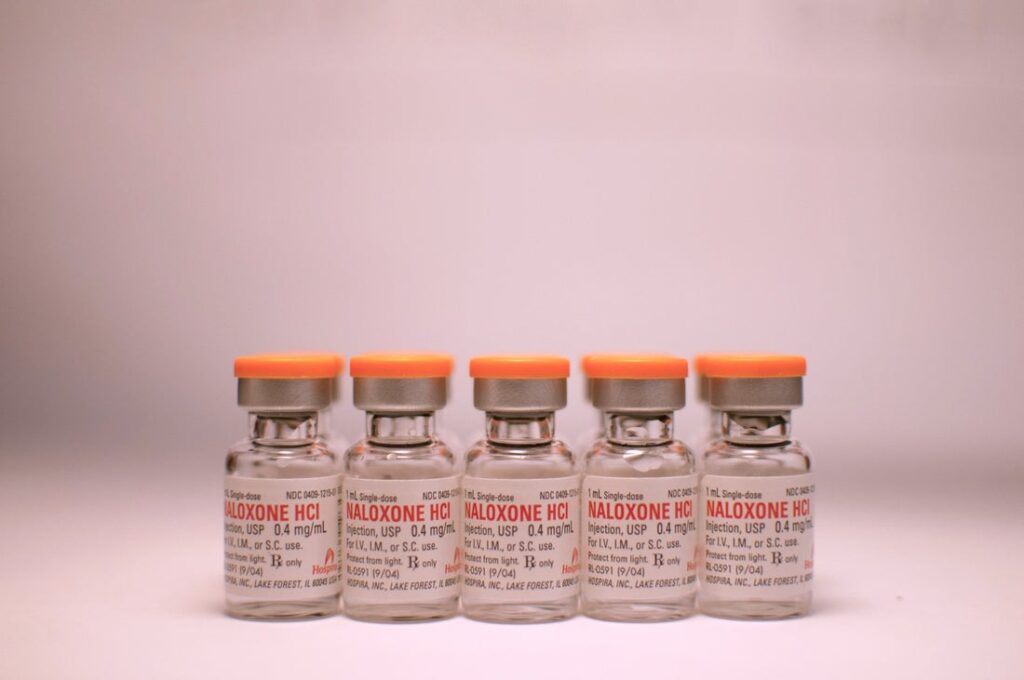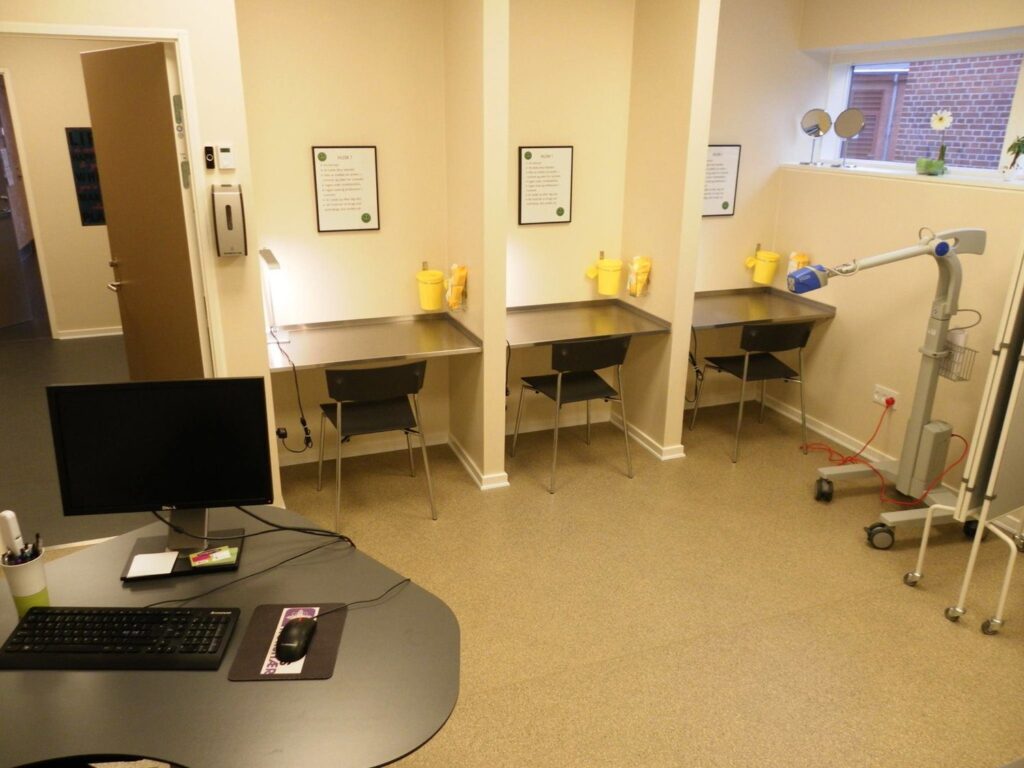Drug overdose is a public health crisis–an epidemic that takes more lives every year. In the U.S., it’s estimated that more than 93,000 people died from drug overdose in 2020, according to the CDC. In San Francisco, overdose claimed the lives of more than 700 people in 2020–twice the number of people who died from COVID-19 in the same time frame, and nearly triple the number of people who died from overdose in 2017.
There are a number of proven, evidence-based solutions that could–and are–preventing overdose both in the U.S. and in countries around the world. Here, we explore the strategies that could help turn the tide on overdose, and save lives of people who use drugs.
Drug checking
Unpredictability in the drug supply can contribute to overdose–and other harms–when people aren’t aware of what’s in their supply. For instance, fentanyl (a powerful synthetic opioid) added to supplies of cocaine or heroin may lead to overdose if drug users aren’t aware that fentanyl exists in the supply. Tools that enable people to check the content of drugs help people who use drugs make informed decisions about what and how they use.
Fentanyl test strips are a relatively simple and inexpensive way to test for the presence of fentanyl and several fentanyl analogues in injectable drugs, powders, and pills. Studies have found that people who use fentanyl test strips–and receive a positive test result–use this information to make changes in how they use in order to reduce their risk of overdose.
SFAF harm reduction staff recommend getting training on how to use them effectively, because they can be confusing to use, and because there are times when they can be unreliable. They are not recommended for testing meth or ecstasy, as false positives are common with these substances.
Find out more about using fentanyl test strips from Dance Safe. And, access test strips from any San Francisco AIDS Foundation location including the Harm Reduction Center.

Reagents sold by organizations like Dance Safe can help people who take drugs like MDMA, cocaine, and LSD check their drugs for other substances like bath salts and PMA (which is highly toxic).
Portable drug checking technology, using chemical analytical methods such Fourier Transform Infrared Spectroscopy (FTIR) and mass spectrometry can allow health departments and harm reduction organizations to provide real-time analysis of drug samples at the point-of-care. Organizations around the world provide this service–and in the U.S., organizations in Boston and Chicago offer point-of-care drug checking with chemical analysis technology.
Narcan (naloxone)
Narcan (naloxone) is an emergency medication that can reverse an overdose from opioids (for instance, morphine, heroin, and fentanyl). Anyone can be trained to administer Narcan–there are multiple forms of the medication, including a formulation designed for intramuscular injection and a formulation that can be sprayed into the nose. And, anyone who has been trained on how to administer Narcan can access it from pharmacies and community health organizations.
Narcan distribution and trainings and are held at San Francisco AIDS Foundation’s Harm Reduction Center during open hours and at mobile sites, during street outreach and across SFAF programs.

Safer use practices
There are a variety of things that people who use drugs can do to reduce their risk of overdose. That can include things like: doing a test shot; smoking instead of injecting; texting someone before getting high so they can check on you after a certain amount of time; having Narcan present; and not using alone. Find safer injection practices and safer fentanyl use info from the National Harm Reduction Coalition.
Syringe access programs
Needle and syringe access sites that provide harm reduction resources and information empower people who use drugs to take steps to prevent overdose and care for their health in other ways. At SFAF’s Harm Reduction Center, we provide hepatitis C treatment and cure, HIV and STI treatment and prevention, linkage to gender-affirming care, naloxone, overdose prevention training, harm reduction counseling, and more.
Safe consumption services
Safe consumption services (also known as safe injection facilities) are sites where people who use drugs can go to consume pre-obtained drugs under the supervision of staff trained in overdose prevention. These sites–in operation around the world–provide sterile consumption and overdose prevention supplies, linkage to substance use support and treatment services, and a variety of other social and health services. They are shown to reduce overdose deaths, improve the health of people who use drugs, reduce infectious disease, and improve linkage to drug treatment.
There are no legally sanctioned safe consumption services operating in the U.S. The state of Rhode Island, however, made news in July of 2021 by being the first U.S. state to legalize safe consumption services. Other U.S. cities, including San Francisco, also hope to open safe consumption services to stem rising rates of overdose.

Treatment including medicated assisted treatment (MAT)
There are a variety of substance use treatment options with medications that can support people who choose to reduce or stop their use of opioids or other substances including alcohol. For people who use opioids, medications like buprenorphine and methadone reduce cravings and withdrawal symptoms. There are also medication options for people who use alcohol.
Buprenorphine for people who use opioids is available from the Harm Reduction Center.
Safe supply
Safe supply refers to a method of harm reduction where legal and regulated supplies of drugs are available for people to obtain with a prescription. Safe supply could include pharmaceutical-grade opioids in addition to other drugs including stimulants. Offering a way for people to obtain regulated supplies of known substances (that are not adulterated) could reduce risk of unintentional overdose by preventing people from using drugs from toxic and unregulated drug supplies.
There are a few safe supply programs operating in Canada, which provide pharmaceutical-grade opioids (e.g., hydromorphone) to participants.
Decriminalization
Decriminalizing personal drug use prevents overdose and improves the health of people who use drugs by decreasing stigma associated with drug use, and encouraging people to access health care, harm reduction, and overdose prevention services as often as needed.
Several countries around the world have successfully decriminalized drug use, and demonstrated that overdose deaths and other harms such as HIV infections are reduced with this approach. In the U.S., the “dominant approach” to drug use is criminalization and harsh enforcement, which disproportionately devastates people of color and Black and brown people in our country.





